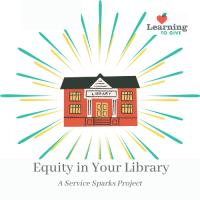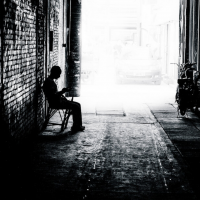Identity self-portraits create opportunities for self-understanding by encouraging youth to reflect on different facets of their identities. Participants illustrate their visible and invisible identity markers, reflect upon how these identities interact with how they perceive themselves and how they are perceived by others.
This activity encourages youth to discuss the power of privilege. Participants will understand how their perspectives, identity, and values influence their decisions in this activity. They will also understand that privileges are social constructs, A social construct is something that exists not in reality, but as a result of human interaction. It exists because humans agree that it exists.
Draw a circle around yourself and consider the love you have inside. Then consider what happens when we share that love with the world. “The Circles All Around Us” challenges the reader to open themselves up to others and in doing so, make the world a better place.
Literature...
Inspired by the real-life stories of author Bao Phi and illustrator Thi Bui, this beautifully crafted picture book tells the story of a simple event in the life of an immigrant family. Phi’s poetic tale invites the reader to join the boy and his father on a fishing trip. This semi-...
Ignite meaningful action that lights up the world through "Service Sparks" youth projects! Do you have a culturally diverse library? Use a spreadsheet to analyze and discuss the cultural representation of a library's collection. Look for gaps and make a proposal to grow the diversity of the books and challenge yourself and others to learn about people and the world from different perspectives.
The "Open Doors to Your Community" project is a virtual door that guides young people to the actual door of local resources so they can learn about their community, take action, and build connections and understanding of their roles in community.
What Is the Purpose...
In“The Librarian of Basra: A true story from Iraq,” Jeanette Winter brings to light the courage, innovation, and strength of a Muslim woman who saved 30,000 library books from bombing during the war in the Middle East. Alia Muhammad Baker organized her community to shelter books in...
We are taught to love all humans and help others, but as a society we tend to be less empathetic when we come face-to-face with someone experiencing homelessness and poverty. Breaking the general stereotypes associated with homelessness and poverty with information and ideas may greatly help individuals who are experiencing such struggles. This toolkit provides information, activities, and resources to help youth use their voice, heart, and hands to take big and small actions for a meaningful purpose.
Learning about issues and using our voice is a right and a civic responsibility and vital to a healthy democracy. Teaching youth at the earliest ages about using their voice prepares them to be civically engaged as adults. It teaches them to learn more about issues and see each person as a valued member of society with an equal vote and an important voice.
A passion for service can begin at a very young age. “The Secret Garden of George Washington Carver” chronicles the inspirational life of George Washington Carver. This beautifully illustrated book goes beyond Carver’s acclaim as an African American scientist, celebrating his...









